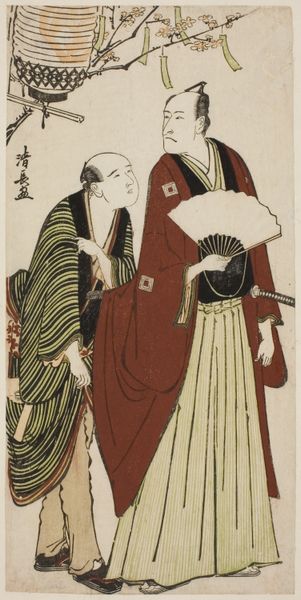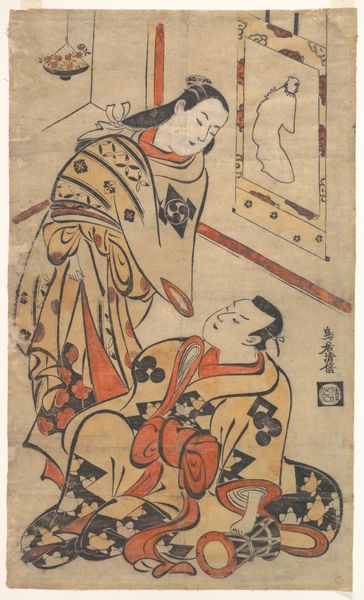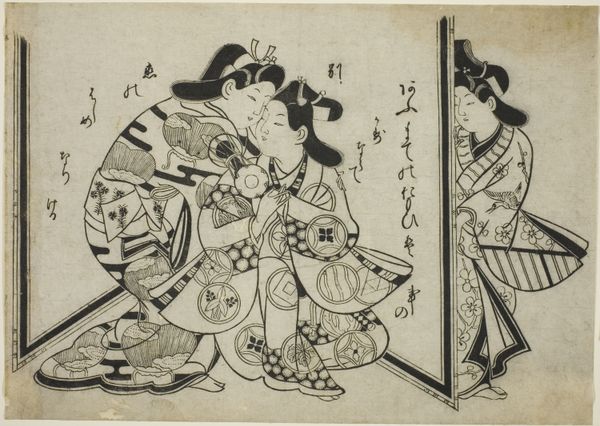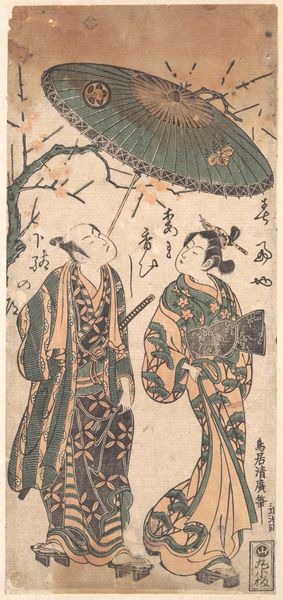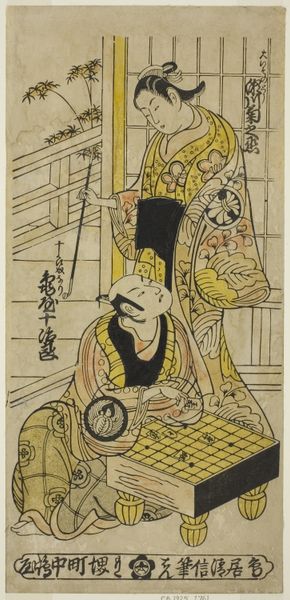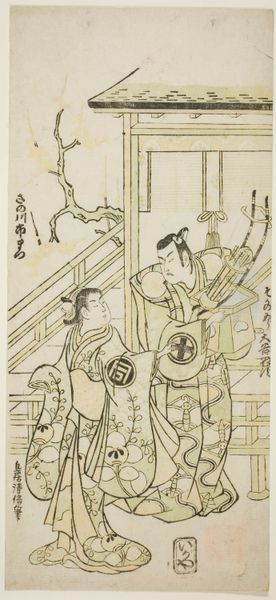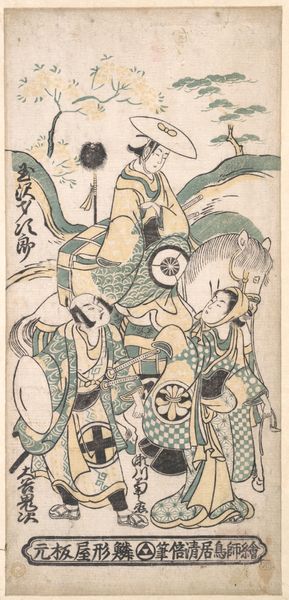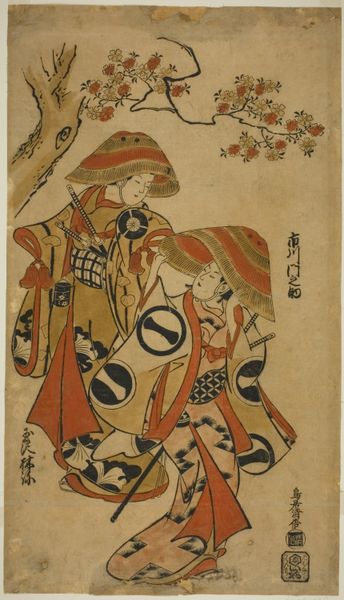
print, textile, woodblock-print
#
portrait
#
ink drawing
# print
#
asian-art
#
textile
#
ukiyo-e
#
japan
#
figuration
#
woodblock-print
#
men
#
genre-painting
Dimensions: 12 x 6 1/4 in. (30.5 x 15.9 cm)
Copyright: Public Domain
Curator: This woodblock print, known as "Three Actors", was created by Torii Kiyomasu II sometime between 1706 and 1763. Editor: I’m struck by how flattened the figures are; they almost feel like elegant paper dolls. The sharp outlines and blocks of colour really emphasize their stylized poses. Curator: Absolutely. Kiyomasu II worked within the ukiyo-e tradition, which often depicted scenes from everyday life and, importantly, the world of Kabuki theater. The representation of actors was huge at the time, reflecting their celebrity. Editor: The composition is compelling. The dominant figure in the center draws the eye, while the others frame him, creating this layered effect that guides your focus through the visual narrative. Curator: Yes, and consider what these representations meant to their audiences. These actors weren't just performers; they were figures onto which audiences projected aspirations, desires, even social critique. Kabuki offered a space for transgression and exploring gender roles in ways that everyday life often didn't allow. The prints themselves became commodities in a growing market. Editor: It's fascinating how the bold patterns and strong lines function both decoratively and symbolically. The crests on their garments, the careful rendering of fabrics... these elements draw us into a visual world operating beyond mere representation. Curator: And notice how class and status intersect here. The patronage of the merchant class fueled the ukiyo-e art world, even though traditional society ranked merchants lower than others. The actors themselves occupied a complex position in society – popular, but still outside the conventional hierarchies. These prints subtly played with, and sometimes challenged, the established social order. Editor: The print’s condition enhances the visual experience; time has softened the inks, creating muted colors. They almost speak to the print's age and its journey through history. Curator: Exactly! Looking at this print gives us a rich portal into understanding the cultural dynamics of 18th century Japan. Editor: It highlights how an artwork, seemingly simple in its composition, can reveal a complex and multifaceted reflection of society's values and aspirations.
Comments
No comments
Be the first to comment and join the conversation on the ultimate creative platform.


